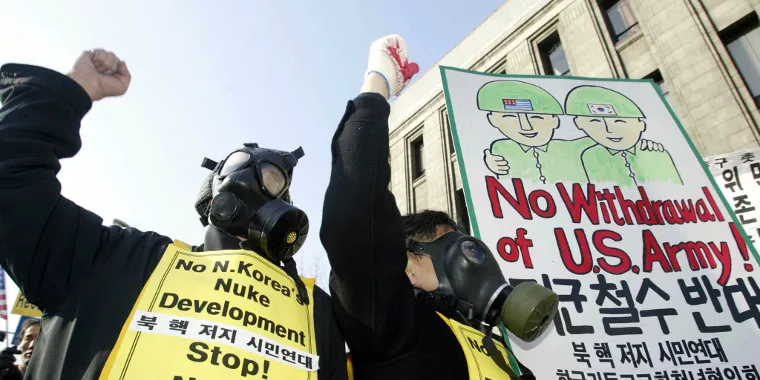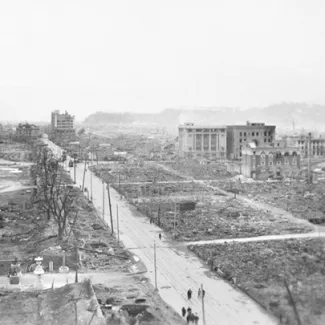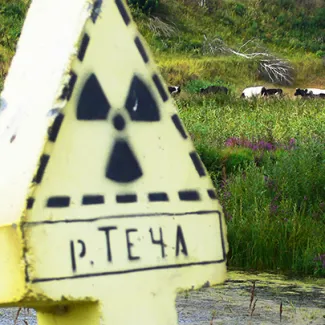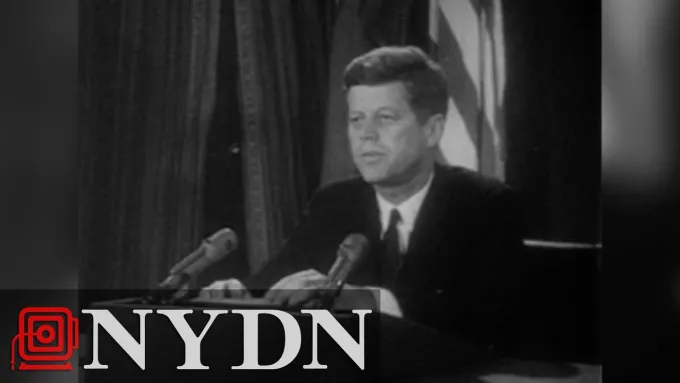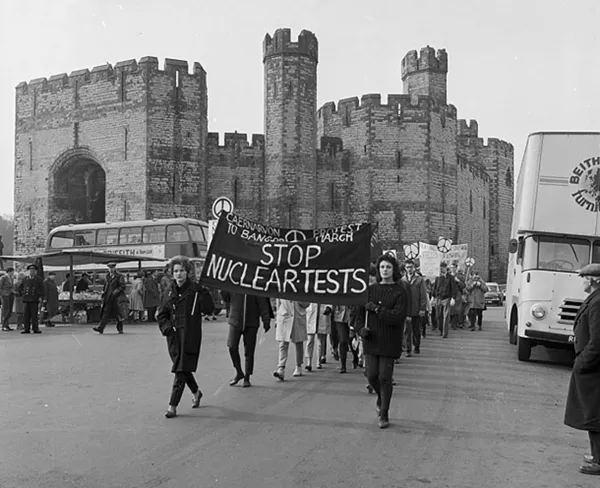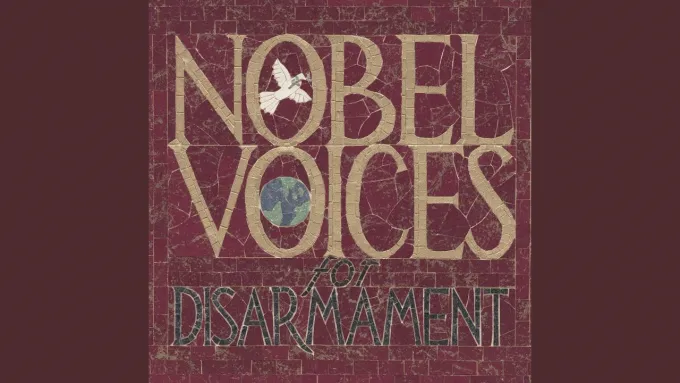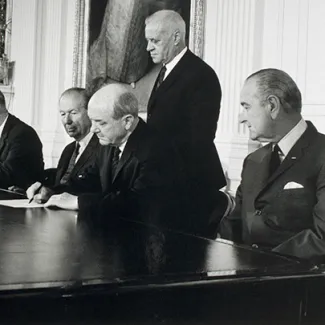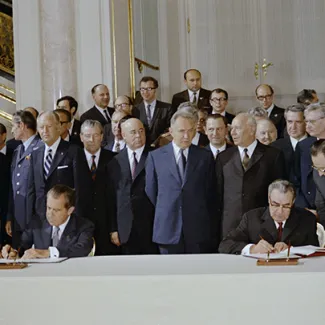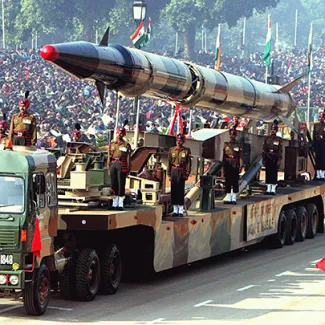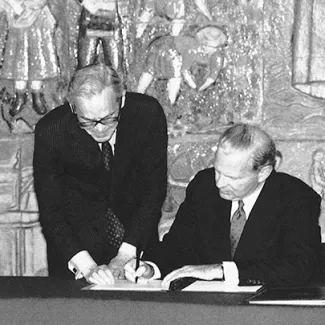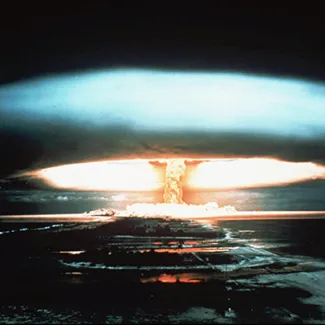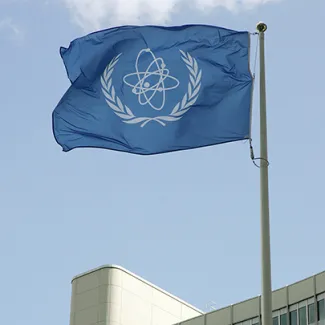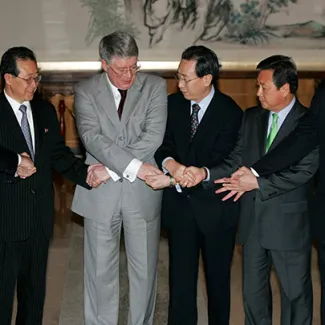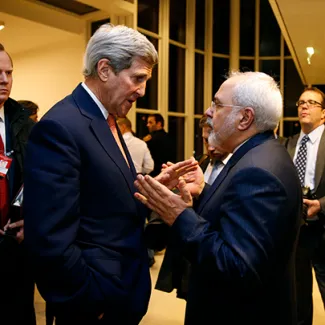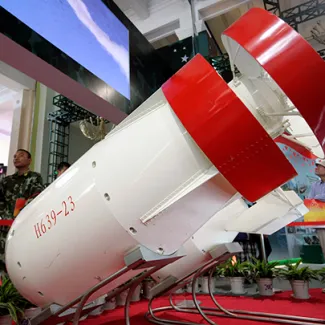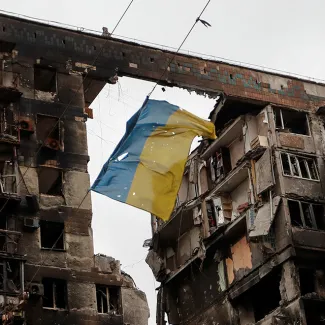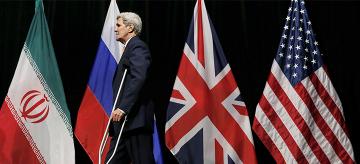The History of Nuclear Proliferation
What are the most significant attempts to stop the spread of nuclear weapons, and have they succeeded? Explore this timeline, from the first atomic bomb to Russia’s war in Ukraine.
Last Updated
Nuclear weapons pose an enormous threat to humanity. Since their first use, different leaders and organizations have been trying to prevent proliferation to additional countries. Despite their efforts, more states than ever before have obtained nuclear weapons. This timeline explores some of the critical actions and decisions that led to today’s distribution of those weapons and the world’s non-proliferation regime.
Timeline: Nuclear Proliferation
1938
1938
- 1962
1938
- 1962
The Nuclear Age Begins
Aug 6, 1945
- Aug 9, 1945
The Nuclear Age Begins
Aug 6, 1945
- Aug 9, 1945
First Atomic Bombs Are Dropped on Hiroshima and Nagasaki
Jul 29, 1957
First Atomic Bombs Are Dropped on Hiroshima and Nagasaki
Jul 29, 1957
IAEA Is Created
Sep 29, 1957
IAEA Is Created
Sep 29, 1957
Kyshtym Nuclear Disaster Occurs In Secret
Oct 15, 1962
- Oct 28, 1962
Kyshtym Nuclear Disaster Occurs In Secret
Oct 15, 1962
- Oct 28, 1962
The Cuban Missile Crisis Threatens Nuclear War
1968
- 1975
The Cuban Missile Crisis Threatens Nuclear War
1968
- 1975
Nuclear Nonproliferation Goes Global
Feb 14, 1967
Nuclear Nonproliferation Goes Global
Feb 14, 1967
First Nuclear-Weapon-Free Zone Is Established
Jun 12, 1968
First Nuclear-Weapon-Free Zone Is Established
Jun 12, 1968
First International Treaty to Prevent Spread of Nuclear Weapons Is Signed
May 26, 1972
First International Treaty to Prevent Spread of Nuclear Weapons Is Signed
May 26, 1972
SALT I Treaty Is Signed
May 18, 1974
SALT I Treaty Is Signed
May 18, 1974
India Joins the Nuclear Club
1986
- 2000
India Joins the Nuclear Club
1986
- 2000
End of the Cold War Improves Nonproliferation Efforts
May 23, 1992
End of the Cold War Improves Nonproliferation Efforts
May 23, 1992
Belarus, Kazakhstan, and Ukraine Give Up Nuclear Weapons
Sep 24, 1996
Belarus, Kazakhstan, and Ukraine Give Up Nuclear Weapons
Sep 24, 1996
The Comprehensive Nuclear Test Ban Treaty Opens for Signatures
1997
The Comprehensive Nuclear Test Ban Treaty Opens for Signatures
1997
The IAEA’s Model Additional Protocol is Introduced
2003
- 2018
The IAEA’s Model Additional Protocol is Introduced
2003
- 2018
Progress and Threats
Jan 10, 2003
Progress and Threats
Jan 10, 2003
North Korea Withdraws From the Nonproliferation Treaty
Apr 14, 2009
North Korea Withdraws From the Nonproliferation Treaty
Apr 14, 2009
North Korea Walks Out of Six Party Talks
Jul 15, 2015
North Korea Walks Out of Six Party Talks
Jul 15, 2015
World Powers Reach a Nuclear Agreement With Iran
Jul 7, 2017
World Powers Reach a Nuclear Agreement With Iran
Jul 7, 2017
The United Nations Adopts Nuclear Weapons Ban Treaty
Feb 24, 2022
The United Nations Adopts Nuclear Weapons Ban Treaty
Feb 24, 2022
Russia Invades Ukraine
Russia Invades Ukraine
Feb 24, 2022
Teaching Resources
Activity
Understanding Past and Present Nuclear Threats
Length
40 Minutes
